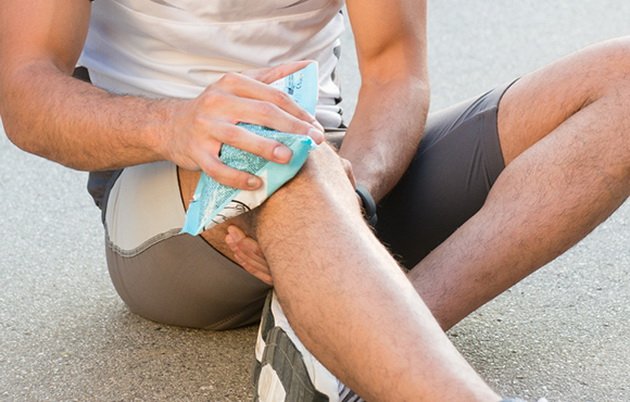
5 common walking injuries and how to deal with them
1. Stretching the lower back
Symptoms Discomfort or pain in the lower back, on one or both sides of the spine.
Causes of injury. If you are not used to long walks, your technique may deteriorate as the walking distance increases. Too long a step is one of the reasons for the increased stress on the lower back against the background of fatigue, especially if you have already had problems with the spine. A sprain in the lumbar spine occurs when the ligaments, tendons and muscles are overstretched, which causes small tears in the tissues.
What to do. Poor hamstring stretches and weak core muscles are common problems. When the pain subsides after a few days of rest, get in the habit of stretching your thigh muscles several times a day to improve flexibility and reduce stress on your lower back. The second step is to stretch the muscles that stabilize the spine while walking. 5 core exercises for back pain for runners are a good starting point.
2. Plantar fasciitis
Symptoms The injury is manifested by dull aching or sharp pain in the heel and along the longitudinal arch of the foot. Pain usually worsens in the morning or at the start of a workout.
The reasons. Plantar fasciitis, or plantar fasciitis, can cause inappropriate or worn shoes, over-pronation of the foot, and high insteps. If you increase your mileage or climb more uphill than usual, this area of the foot can also become inflamed.
What to do. It is not necessary to stop training, it all depends on the intensity of the pain syndrome. Try not to climb the slopes and wear good shoes that provide support for the foot and correct excessive pronation. Stretch your calf muscles . Use alternative activities such as cycling , swimming, or strength training to keep fit until you recover from your injury.

3. Patellofemoral pain syndrome (SPF)
Symptoms Pain or discomfort around the kneecap.
The reasons. This injury is often referred to as “runner’s knee”, but walking enthusiasts also experience it. The cause is a violation of the movement of the patella between the condyles of the femur. Inflammation can cause an increase in distance, frequent descents from inclines, or an excessive tilt of the body forward while walking.
What to do. Weakness of the quadriceps and pelvic muscles is the main cause of this injury. To prevent the inflammation from developing into a serious problem with severe pain, you will have to rest a little. You can try other activities, such as swimming or ellipsoid, if they are well tolerated. If you can still walk without much discomfort, reduce your mileage and try not to walk up or down slopes. As you get better, pay attention to stretching your quads and pelvic muscles to adjust the biomechanics of kneecap movement.
4. Syndrome of the iliotibial tract (SPBT)
Symptoms The most common symptom is sharp pain outside the knee joint, but you may also feel aching pain or discomfort along the outer thigh or pelvis.
The reasons. The iliotibial, or iliotibial, tract attaches to a muscle in the pelvis called the fascia lata tensor. The muscle works together with the gluteus minimus and gluteus medius muscles, its function is to abduct the thigh. When these muscles are weak or tense, the iliotibial tract rubs against the outer edge of the patella, which can cause inflammation as exercise gets harder. Too frequent climbs and descents, long strides, and dramatic increases in mileage are other common causes.
What to do. Correct pronation with shoes or orthopedic insoles, rest, strengthen the gluteus medius and small muscles. In most cases, this should fix the problem. Ice can be applied to the patella to reduce inflammation. Stretching of the iliotibial tract is also recommended. If you have a massage cylinder, you can use it to stretch the tissues along the outer thigh and thereby relieve the pain in the knee joint area.

5. Tendonitis of the Achilles tendon
Symptoms Pain and sometimes swelling along the back of the heel.
The reasons. Proper walking technique requires you to push off your toe. This can cause inflammation in the tendon, through which the calf muscles are attached to the heel. The inflammation is accompanied by pain, which, if nothing is done, can become very severe. Walking on slopes or on a steep incline on a path can also cause inflammation. Another risk factor is the prevalence of training on rough terrain.
What to do. For mild inflammation, close your distance and try to walk on flat, level surfaces such as a stadium. To reduce inflammation and relieve pain, it is recommended to apply ice several times a day for 20 minutes. In severe cases, you will need to stop exercising and switch to alternative activities that do not irritate the affected area, such as swimming or cycling. Remember that aggressive calf stretching can aggravate inflammation of the Achilles tendon, so try to keep stretching to a minimum. If the pain persists after a week or two, see your doctor or physical therapist.
